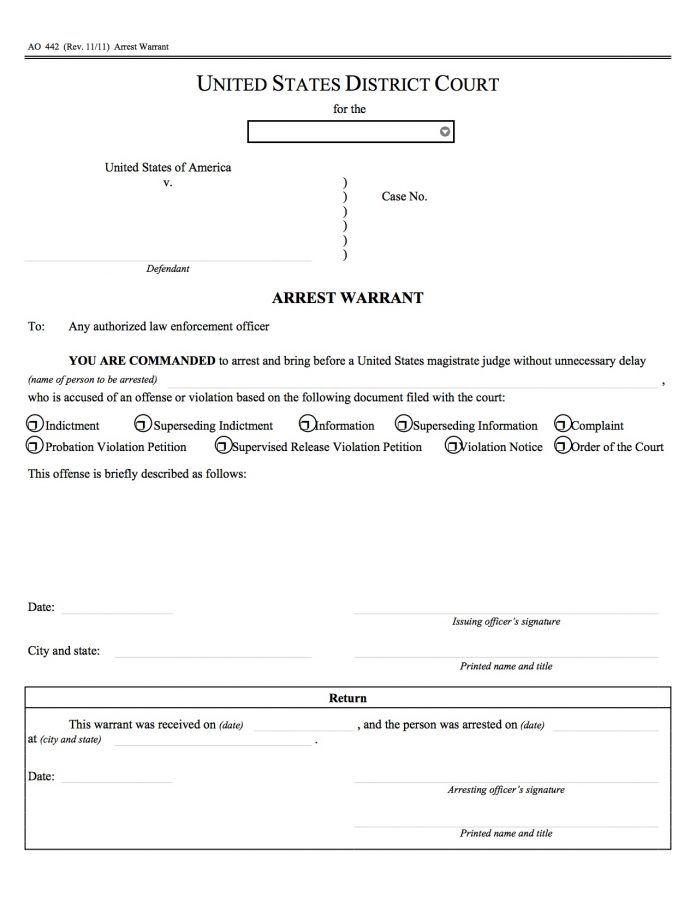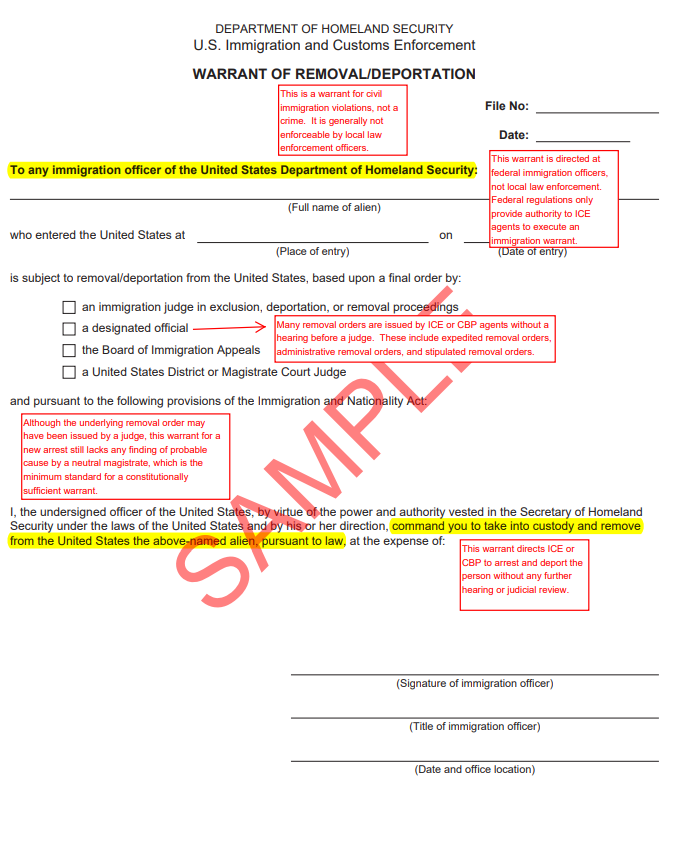
Article
ICE & Warrants: What Your School Leaders Need to Know
Many have expressed concerns about responding to U.S. Immigration and Customs Enforcement (ICE) agents in the event they appear at schools. By now, most school administrators know that warrants are a critical item in determining whether access should be granted, what kind of access, and how much. And, by now, most school administrators are aware that only a “judicial warrant” entitles an ICE agent to access. But what is a judicial warrant exactly, and how can your administrators know if they are presented with one or something else? This alert aims to provide some clarity.
Broadly speaking, there are two types of warrants that ICE agents may present upon their arrival: administrative warrants and judicial warrants. These warrants differ in appearance and have vastly different implications.
Judicial Warrants
A judicial warrant is an official warrant issued by a judge. A judicial warrant will have the name of the issuing court at the top, e.g., “The Federal District Court of…,” and it must be signed by a federal judge, such as a United States District Judge or a United States Magistrate Judge. Typically, the corresponding abbreviation “U.S.D.J.” or “U.S.M.J.” will sit below the signature line. This court sanctioning is an important due process protection that comes from the Fourth Amendment to the Constitution, which guards against “unreasonable searches and seizures.” The Fourth Amendment requires government authorities, such as ICE, to establish reasonableness by demonstrating to a judge “probable cause” in connection with whatever they aim to search or seize. If a judge has signed the warrant, s/he has determined that there is “probable cause” for the authorities to execute the warrant by conducting a search or seizure, which itself is tempered with aspects of reasonableness.
A judicial warrant will specify whom the government may seize or what premises it may search. A search warrant will further indicate a timeframe within which the search must be conducted, a description of the search area, and the items to be searched for and seized. If ICE has a signed judicial warrant that, for example, specifies a place to be searched or a person to be arrested/detained, it is lawful for ICE to enter into the designated premises to search for and/or arrest/detain the individual identified in the warrant. Importantly, while the contents of a warrant authorize access, they also establish limitations. ICE is confined to the grants of the warrant; and ICE agents are not permitted to go beyond them. This means, for example, that ICE may only arrest/detain the individual named in the warrant or search the location specified in the warrant. Therefore, if ICE presents to a school with a signed judicial warrant, administration should take time to evaluate it, with the support and consultation of legal counsel, and prepare to cooperate in the manner specified if ICE is appropriately authorized to proceed. In the interim, personnel should avoid sharing student information, even in the face of a judicial warrant, as information sharing is not required.
Sample Judicial Warrant
(click to expand image)
Administrative Warrants
A more common warrant type that ICE officials carry is an administrative warrant. An administrative warrant is very different in scope and effect from a judicial warrant. ICE agents are not required to establish “probable cause” to convince a judge to sign the warrant. Rather, ICE agents produce their own administrative warrants, such as a Form I-200 Warrant for Alien Arrest. An administrative warrant will bear a “U.S. Department of Homeland Security” indication rather than the name of an issuing court, and it will be signed by an ICE agent, rather than a judge. Administrative warrants do not authorize ICE agents to enter a premises without owner/operator consent due to Fourth Amendment protections. Should an ICE agent present an administrative arrest or removal warrant, school officials are not required to permit the agent to enter any non-public area of the premises to locate any specific individual. Given the security measures now in place in schools, we generally consider any interior part of a school building to be a “non-public” area. However, in the event an ICE agent appears with an administrative warrant and specifically claims exigent circumstances, school officials should comply with ICE’s request to execute its warrant.
Sample Administrative Warrant
(click to expand image)
School officials are advised to implement preparedness plans and ensure that employees are trained on how to handle a visit from ICE in the event this should occur. Porzio’s Education attorneys are available to help guide you through these unprecedented times.





